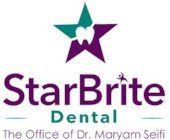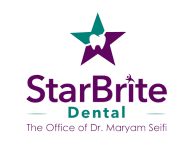The Many Benefits of Treatment with Palatal Expanders
Palatal expanders are dental or orthodontic appliances that expand the shape of the bones forming the palate of your mouth. Even though this concept may be new to you, this procedure has actually been practiced for several decades. This technology for helping patients—both kids and adults—change the shape of the bones in the face and mouth enables dentists or orthodontists to correct several problems for their patients, such as the following:
- Overcrowding: A child’s upper jaw may be so narrow that their teeth don’t have room to come in. The teeth may be very poorly aligned due to this lack of sufficient space, or some teeth may become impacted.
- Crossbite: A narrow bone structure in the upper jaw and a wider bone structure below it can result in crossbite, a condition where the upper teeth fit inside the lower teeth (they should fit just outside the lower teeth).
- TMD: Temporomandibular disorder can result from poor alignment of the temporomandibular joint (TMJ). Over time, this misalignment can cause headaches, damage to that joint, tinnitus and other problems. A poorly shaped palate can be involved in causing this disorder.
- Sleep apnea: A narrow palate can affect the width of the airway. While a person sleeps, this narrower airway does not provide enough oxygen for the sleeper. Widening the palate helps open the airway.
As a person grows up with this narrowed palate, they may be forced to undergo jaw expansion surgery, referred to as orthognathic jaw surgery. With correct diagnosis and therapy, however, this surgery may be able to be avoided. That is a major benefit of treatment with palatal expanders. This surgery often requires weeks of home recovery before returning to school or work. Wearing a dental expander for months or a year or more enables improvement of these problems without invasive surgery.
When Should a Child Be Examined for a Narrow Palate?
Treating a child with palatal expanders can be a fairly fast process if it is started well before puberty. That’s because the palatal bones do not stop growing until puberty. Children just starting to get in their permanent teeth should receive an examination by a dentist or orthodontist. If they do not have enough room for all their permanent teeth, that is the right time for them to begin early treatment. By seven years of age, any future problem should be detectable in most cases.
X-ray imaging helps a dentist or orthodontist determine if palatal expansion is a good solution. They can see if permanent teeth waiting to come in will become impacted if more room in the jaw is not made available.
How a Palatal Expander Works
For children, this appliance is most often a metal device fixed to the back teeth on either side of the upper arch. In the middle, there is an expandable joint. The patient receives a key that fits into a hole in the expandable joint. Every day, the patient (or a helper) fits the key into the hole and expands the joint a tiny amount. The teeth or mouth may feel strange for a few minutes. This type of orthodontic expander is referred to as a rapid palatal expander.
These daily tiny movements push the two parts of the palatal bone apart. There is a
suture running down the middle of this bone—a type of joint between these two sections of the bone. This joint is held together with fibrous tissue. Day after day, the joint is stretched in tiny increments.
When the proper dimensions have been reached, the appliance is left in place while the body builds new bone to fill the space between the two sections of palatal bone that have moved apart. This usually takes another four to six months.
When a child passes through puberty, this bone solidifies. That’s why correcting the shape of this bone is so much faster when the child is young. While expanding the palate is a slower process among older children and adults, the bone is still capable of significant expansion. That enables adults to experience similar corrections to those of children.
Palatal Expanders for Adults
An effective palate expander for adults can be found in the Vivos Oral Appliance. This is a removable appliance that is worn 16 hours a day. It can be removed while working, going to school, eating or cleaning the teeth. Like a rapid palatal expander, the Vivos appliance can be adjusted by the wearer as directed by the dentist or orthodontist. Time increments are more likely to be weekly or bi-weekly.
Compliance is vital with this type of removable mouth expander. The patient must wear it enough hours a day for this jaw expander to work. Because children may have trouble remembering to wear their appliance, rapid palatal expanders for youth are normally glued in place by a dentist or orthodontist.
An older child or an adult receiving this treatment can expect treatment to last more than a year.
What Is It Like to Wear a Jaw Expander?
It can take both children and adults a little time to get used to having these appliances in their mouths. They may experience any of the following:
- Drooling
- Irritation of the tongue
- Lisp or slight difficulty speaking
- Pressure on the bones of the jaw after turning the expansion joint
- Difficulty chewing or eating (with fixed expanders)
- Shifting bite
These difficulties are normally minor and do not prevent patients from continuing treatment. A person with a
fixed palatal expander will need to avoid hard, sticky, chewy foods, just like a person with conventional braces does. It’s also advisable to avoid eating foods that break into tiny pieces, like raw carrots or nuts.
Caring for Your Smile During Treatment
A person with a fixed expander must try to keep their mouth, teeth and the expander as clean as possible. Twice-daily brushing and daily flossing are a must. The treating dentist or orthodontist can provide advice on the best way to brush around the expander. They might recommend a mouth rinse to be squirted into the crevices around the appliance.
A person with a Vivos Oral Appliance should be sure to brush their teeth before placing the appliance in their mouth.
Following Treatment
Once the palate has been expanded, it might still be necessary to undergo orthodontic correction with conventional braces or clear aligners. During treatment with an orthodontic expander, spaces might develop between some of the teeth. While the width of the upper jaw may now be appropriate, some teeth may still be twisted and need to be straightened.
But this is a big improvement over what would have happened without treatment! For example, some impacted canines can be so misplaced that they would never reach their right positions without surgery. By widening the palate while the child is still young, they have a chance of shifting into their proper positions.
If you think you or your child might need
treatment with an orthodontic expander, please
contact StarBrite Dental in Rockville, Maryland, for an evaluation.



